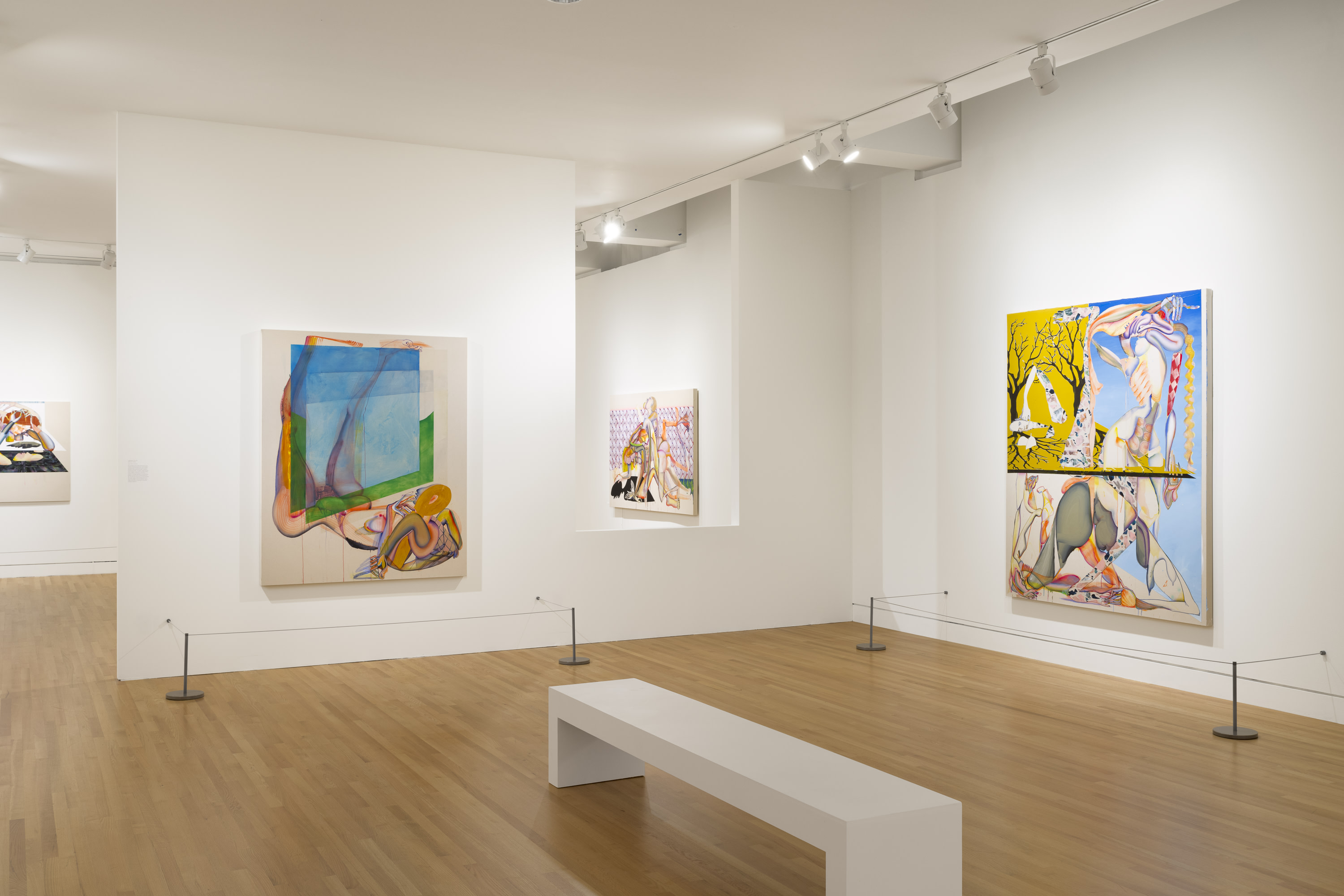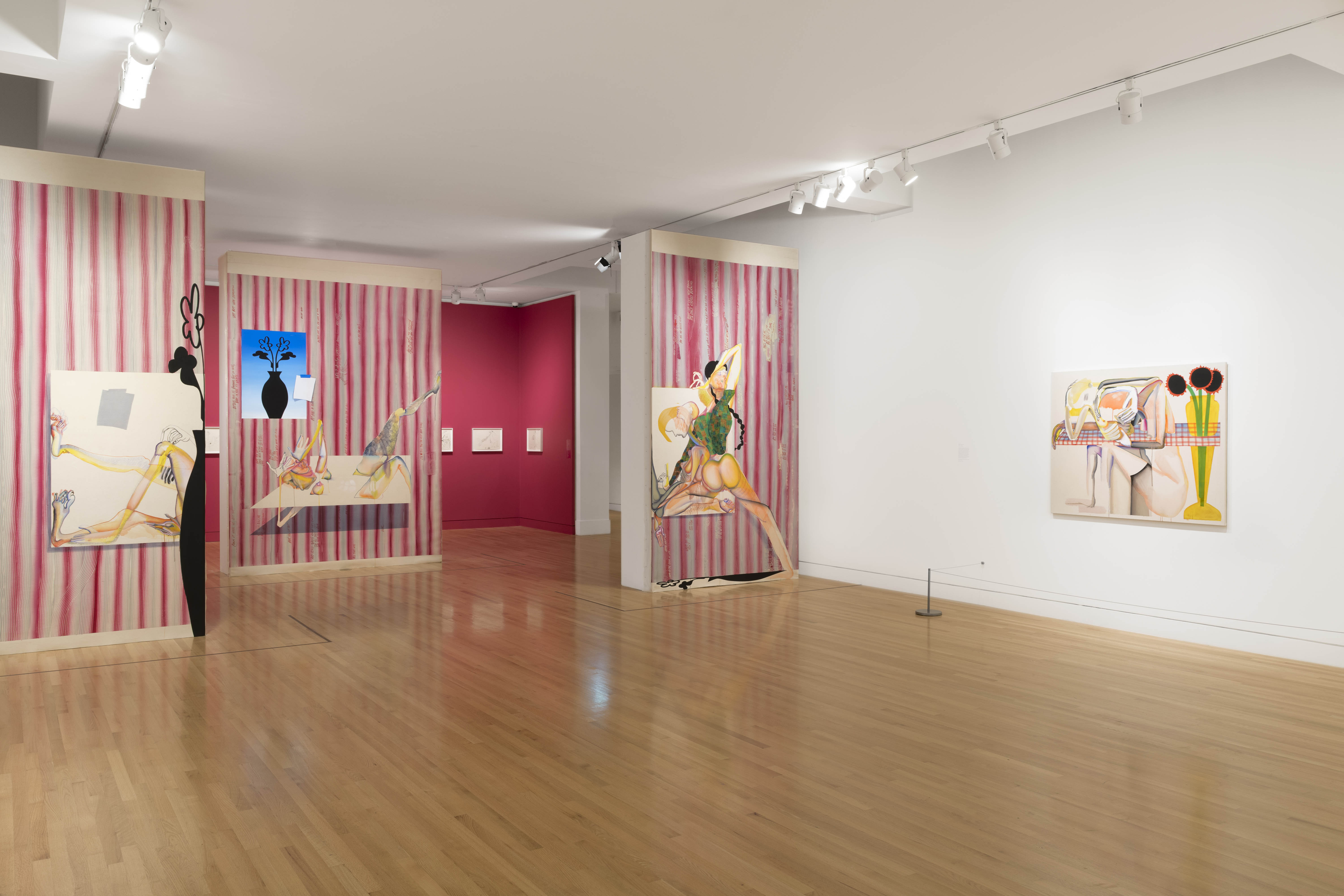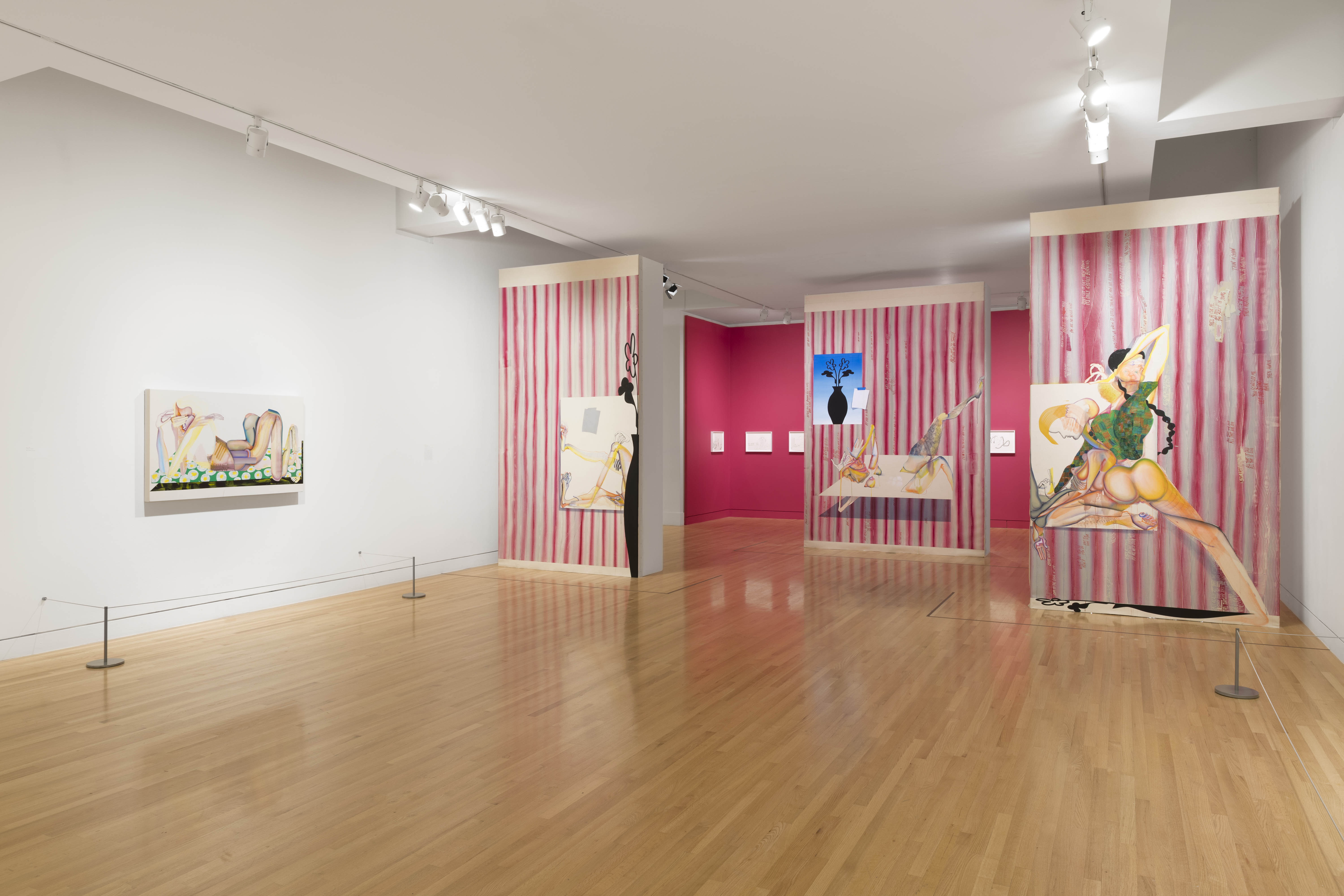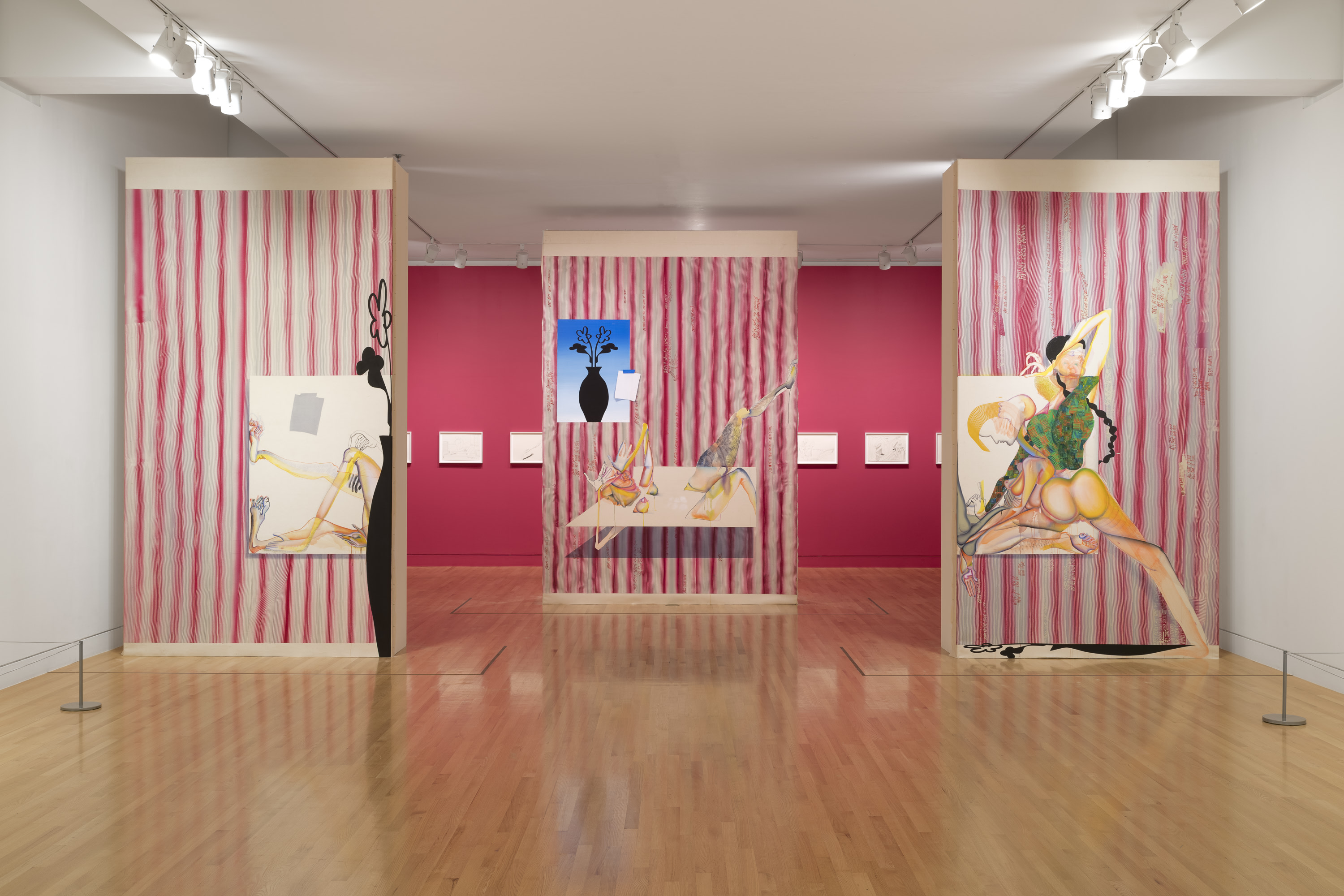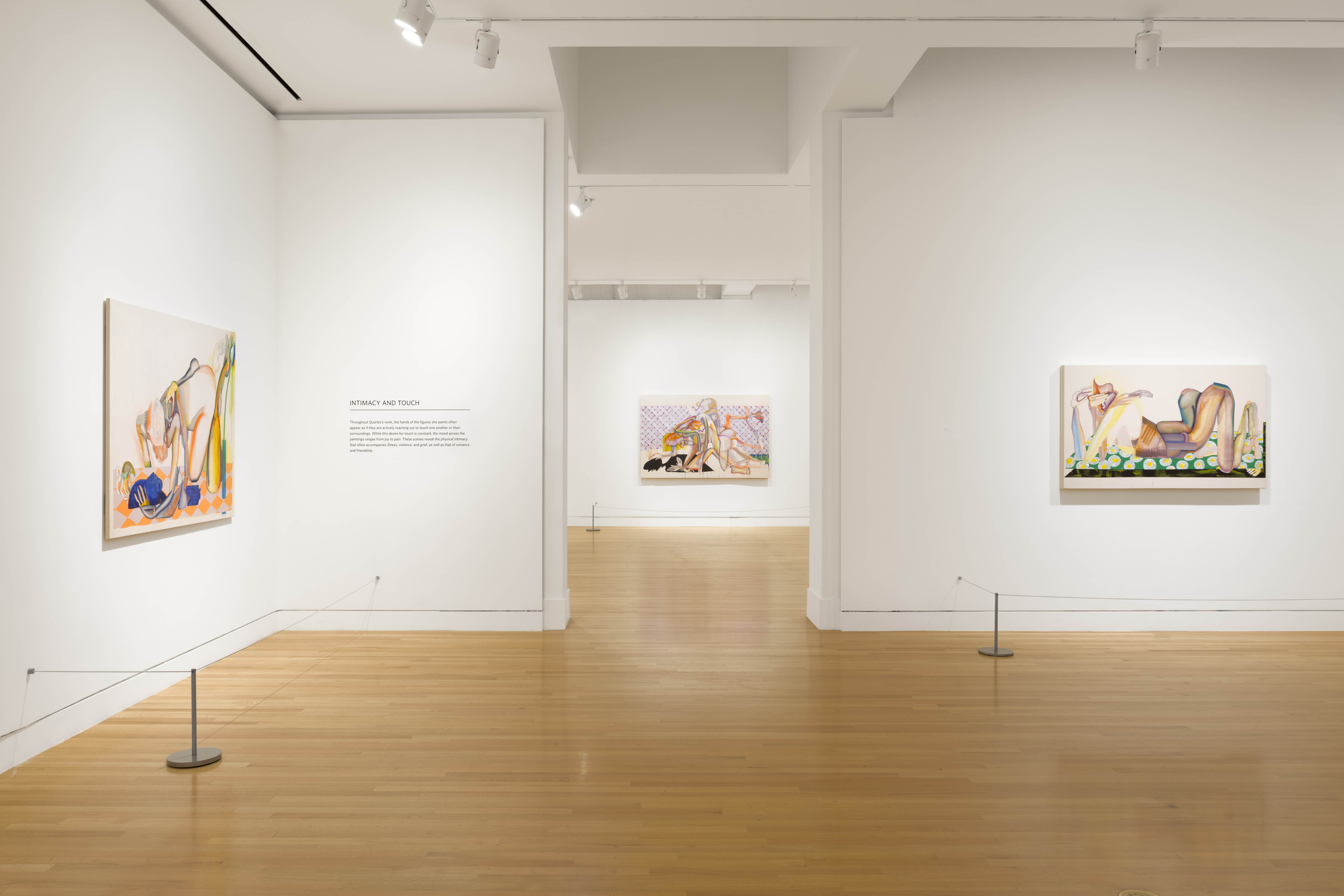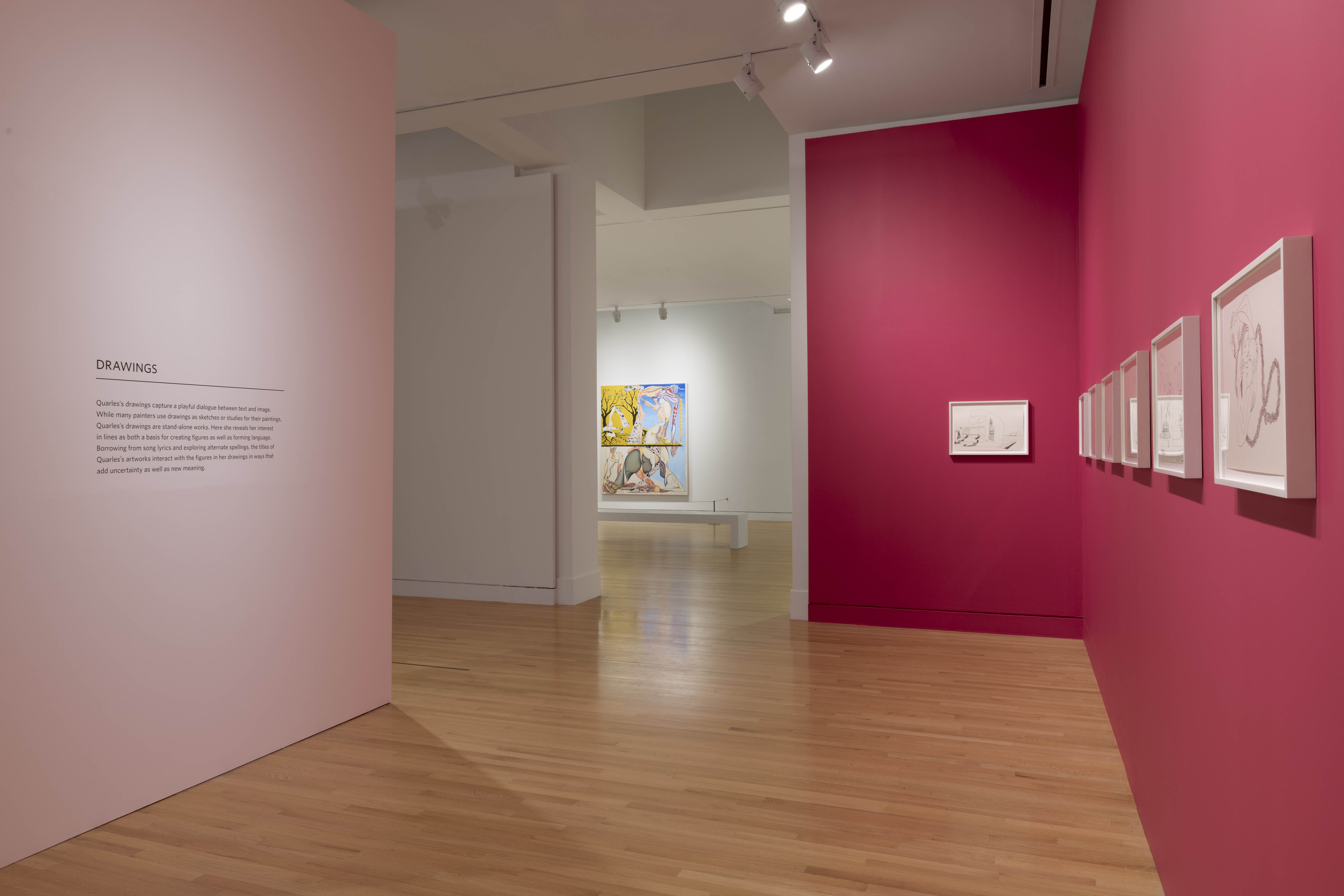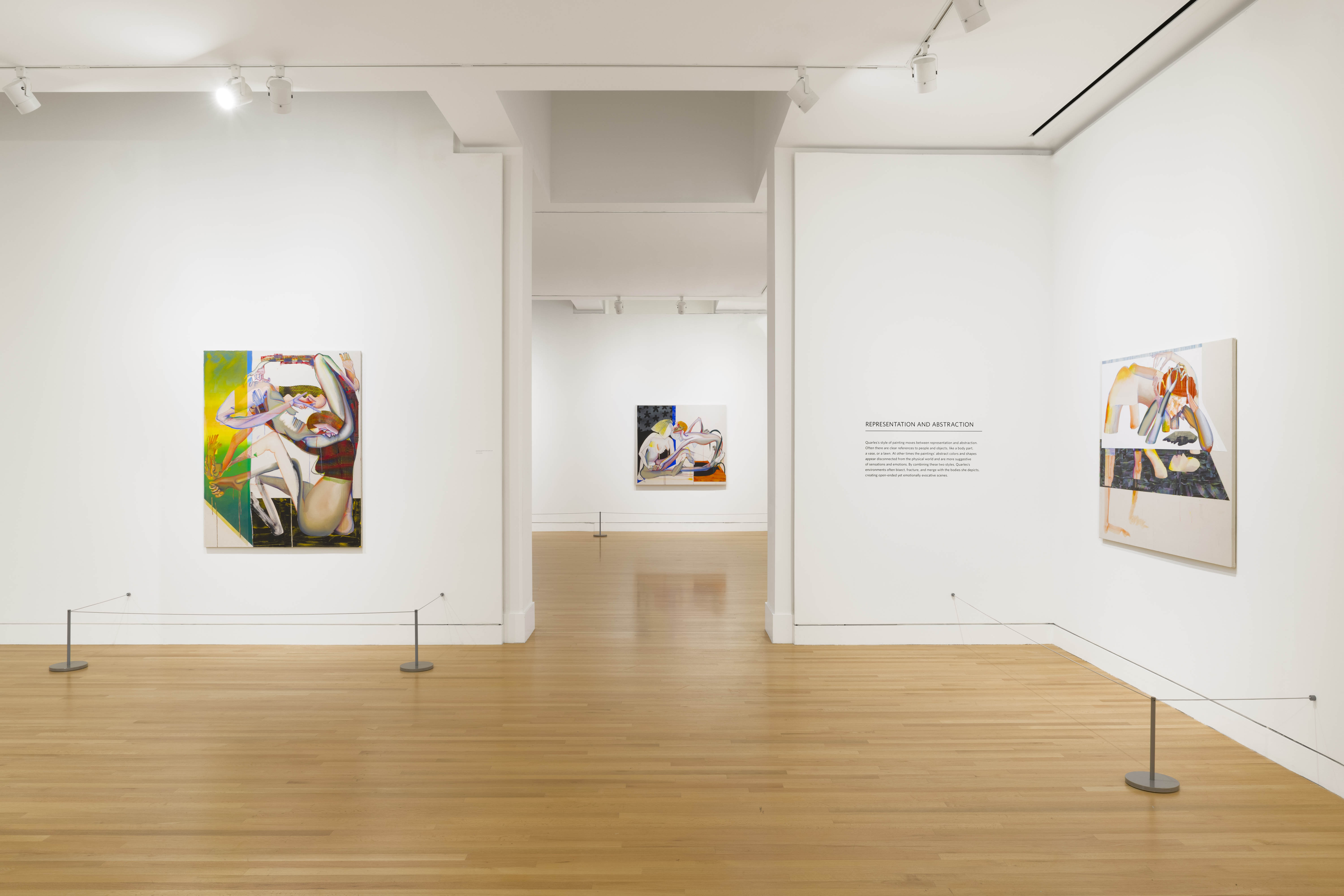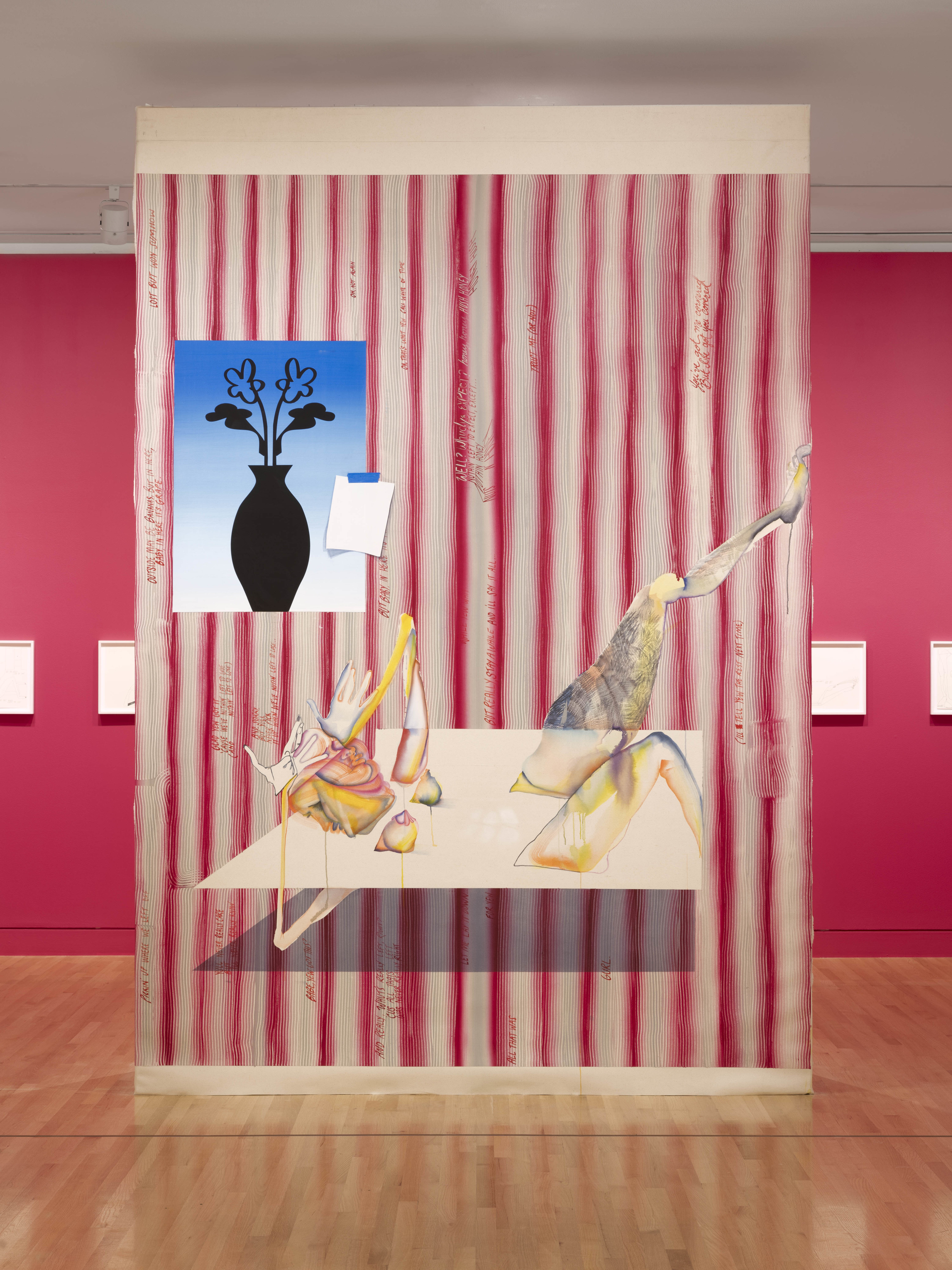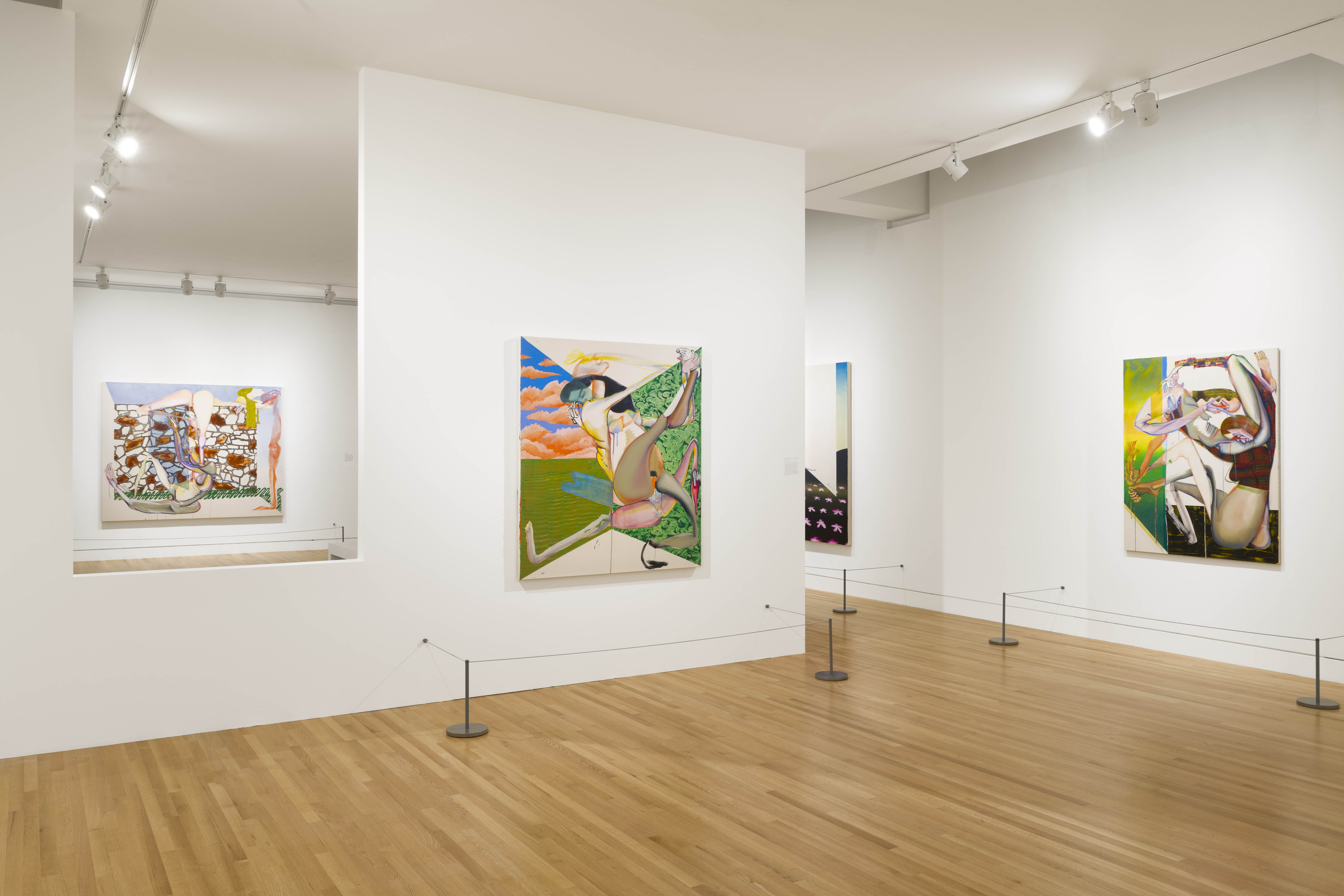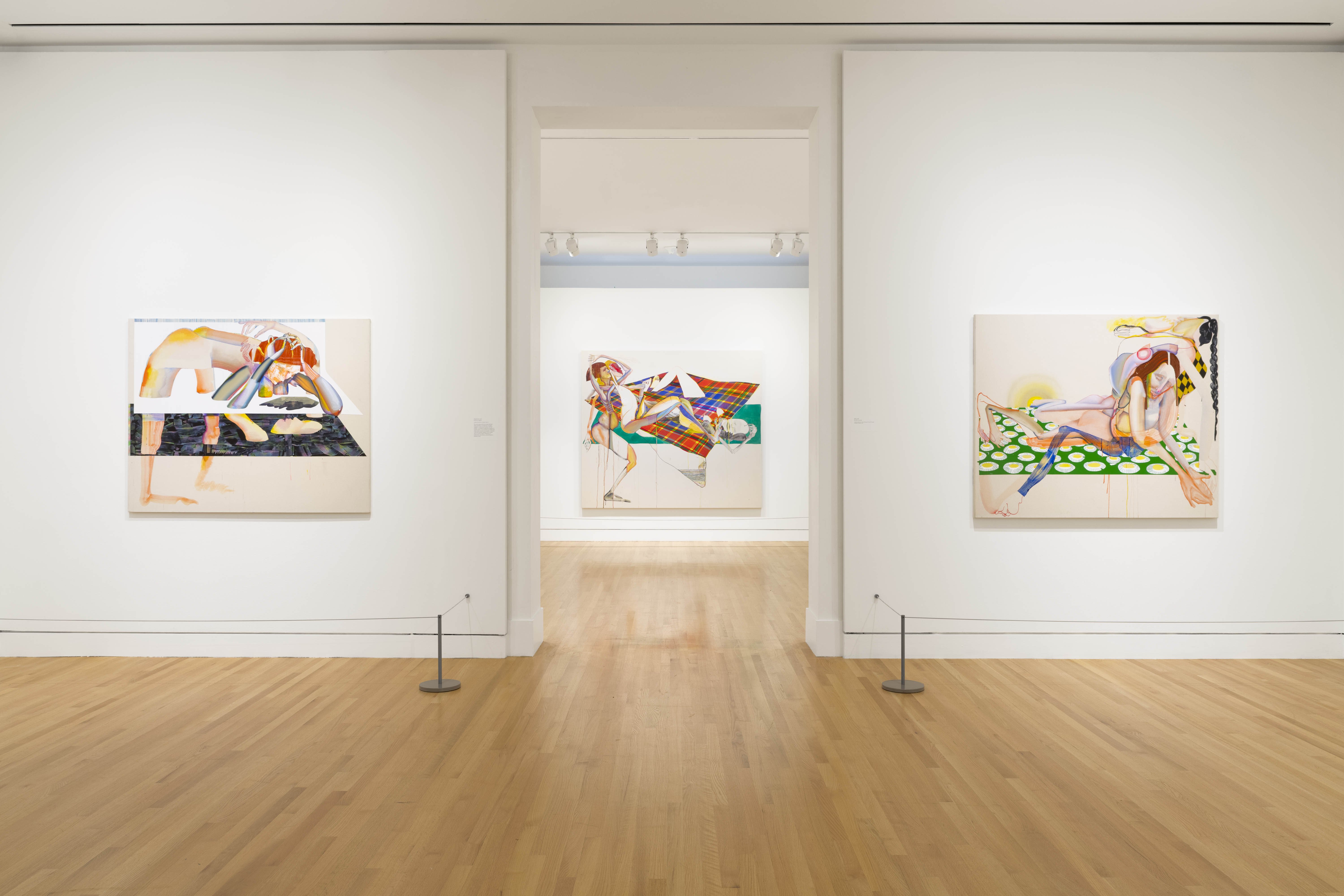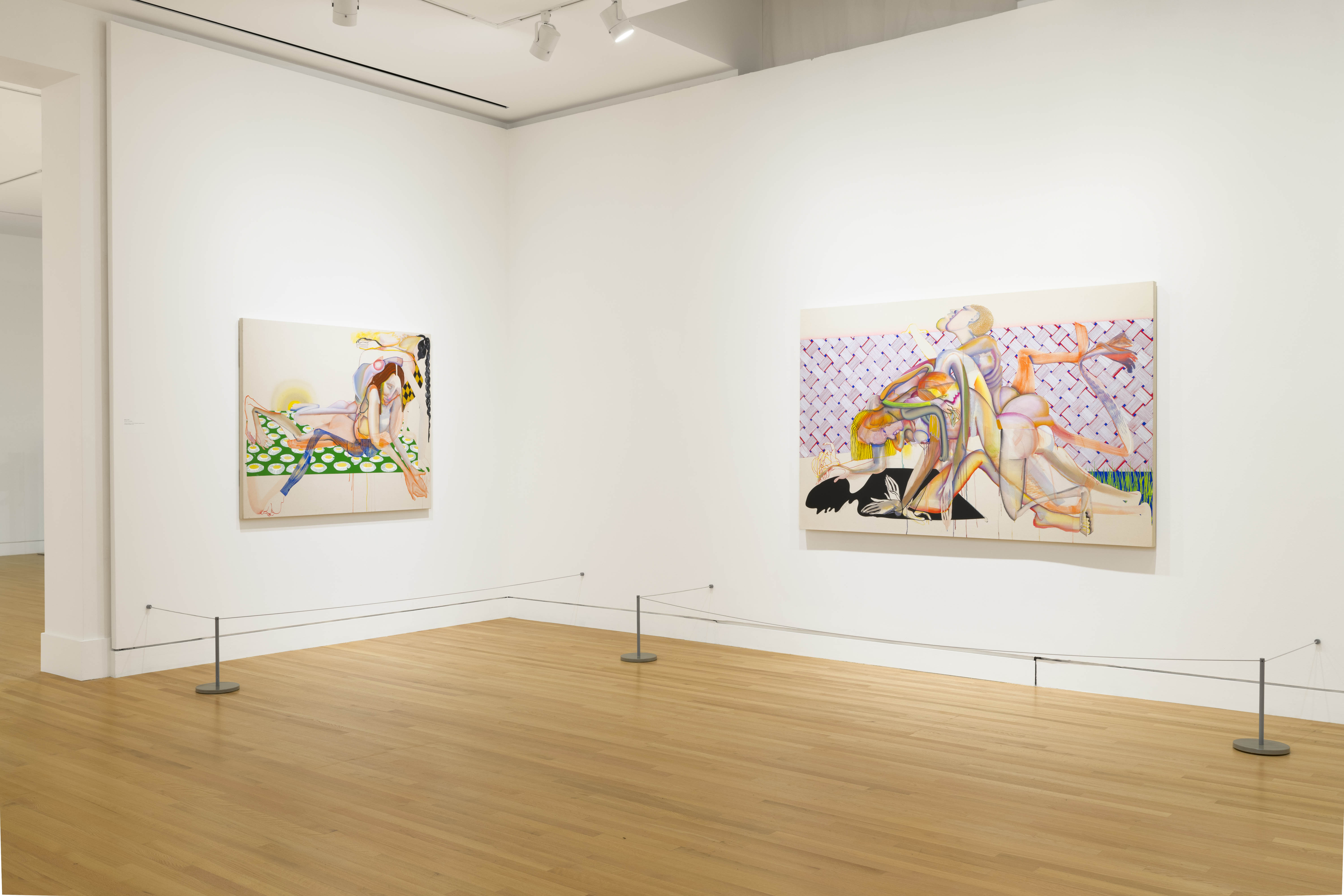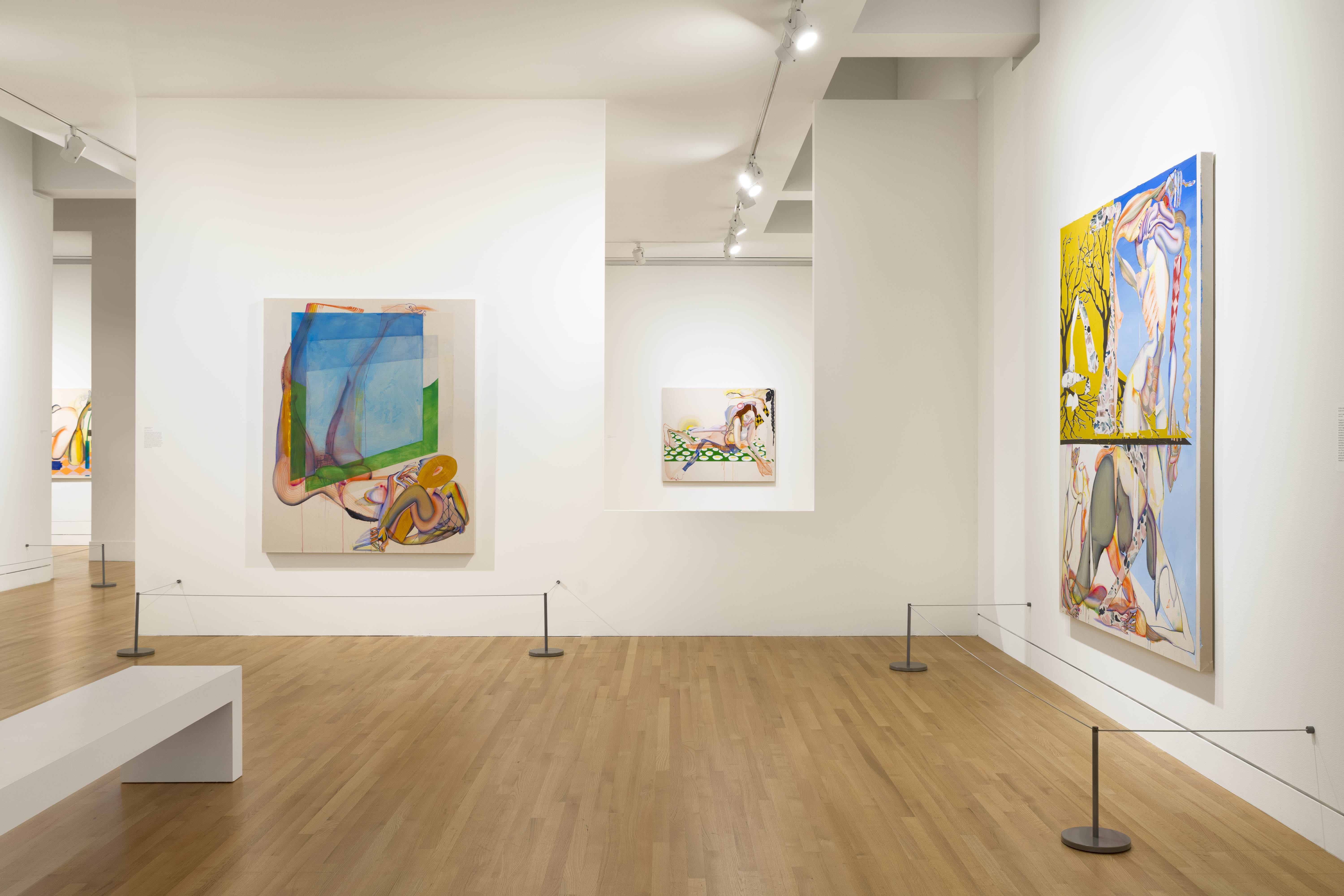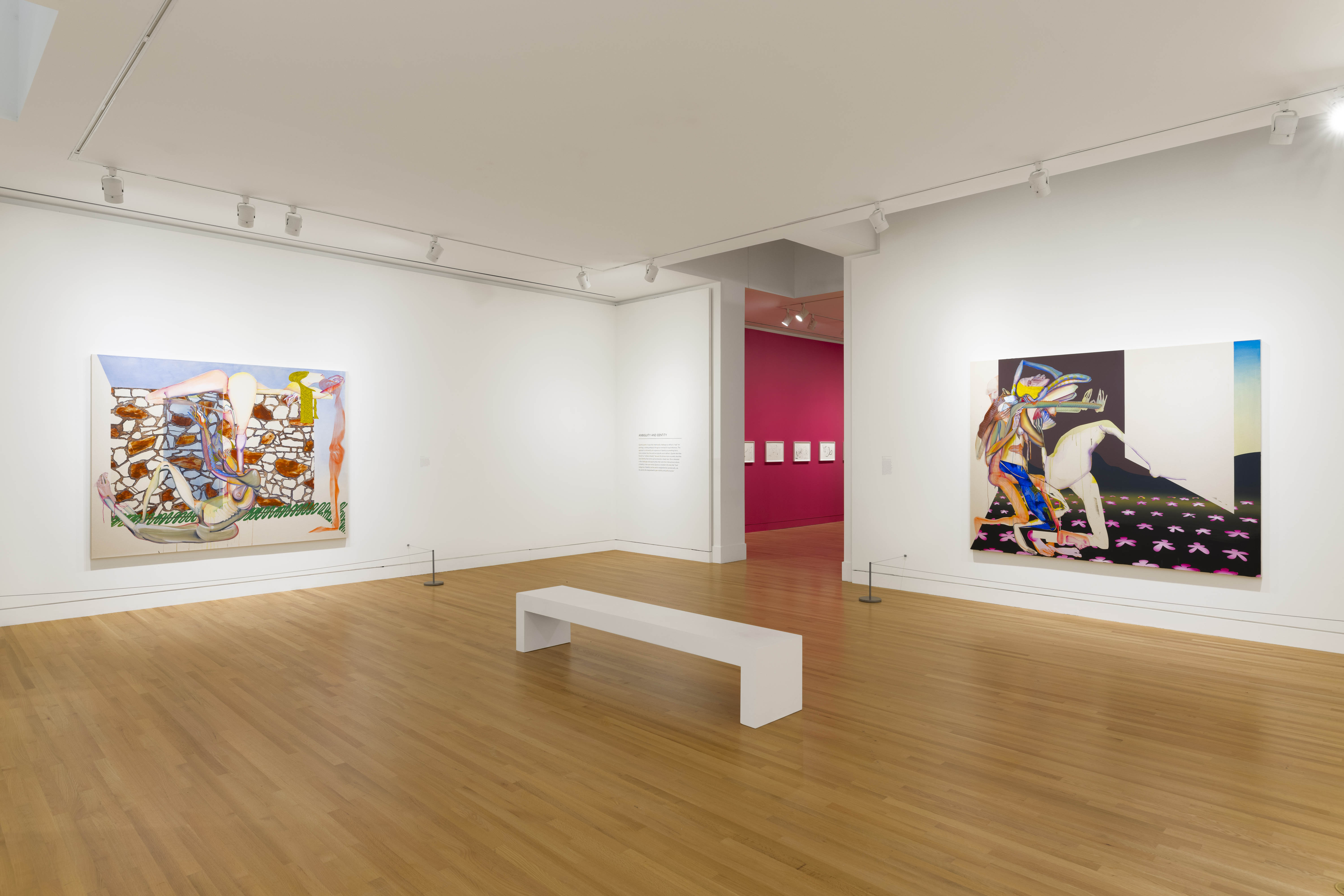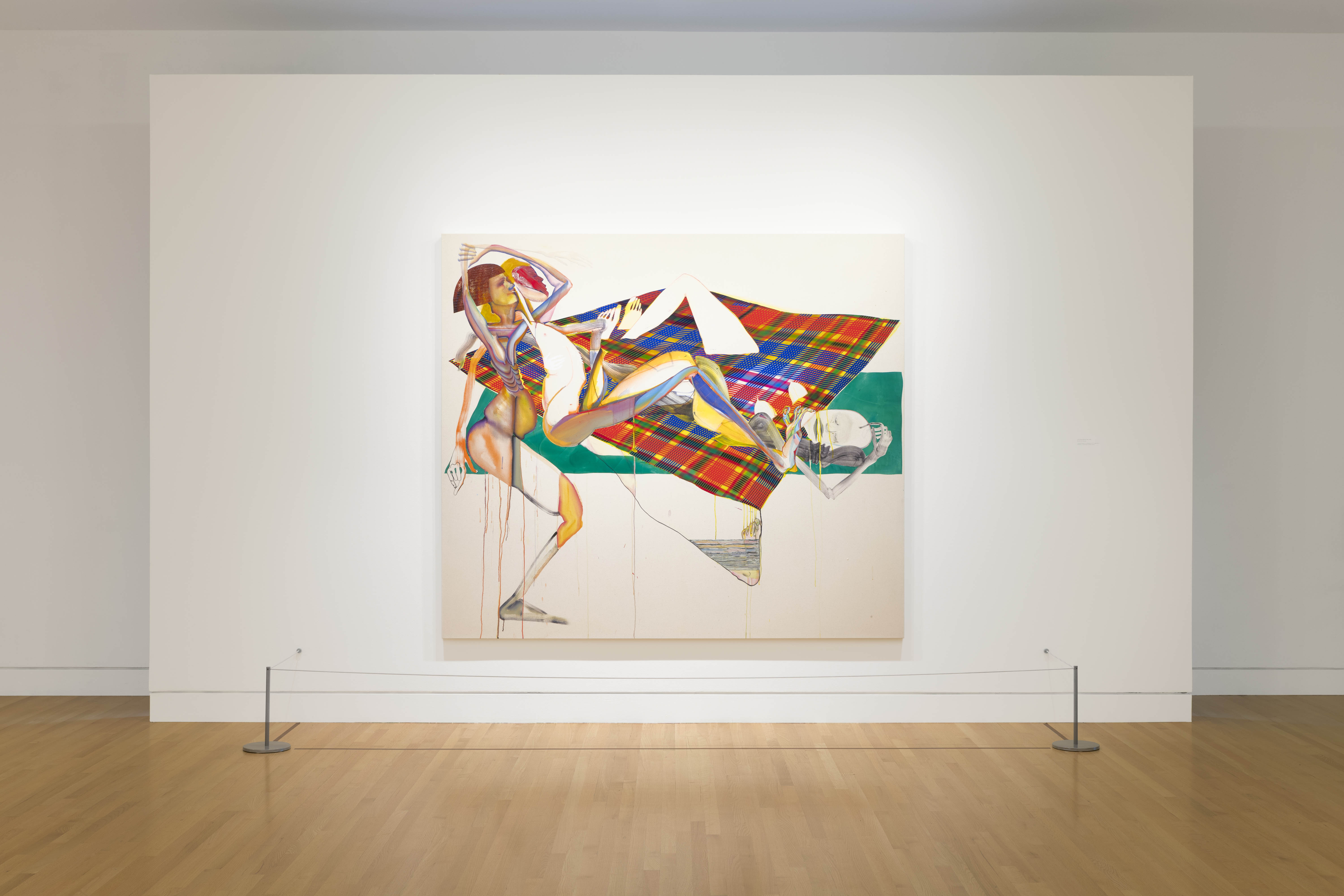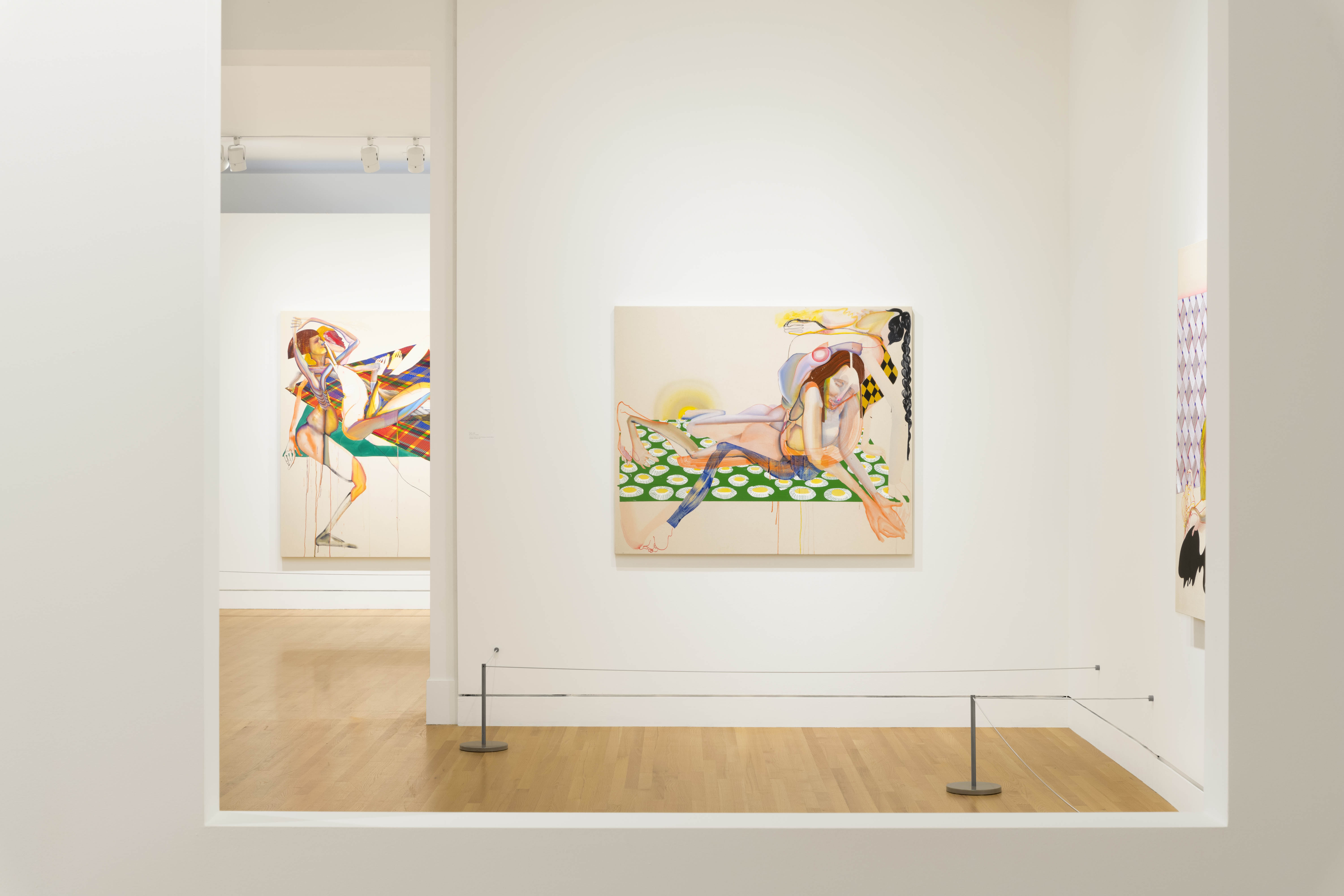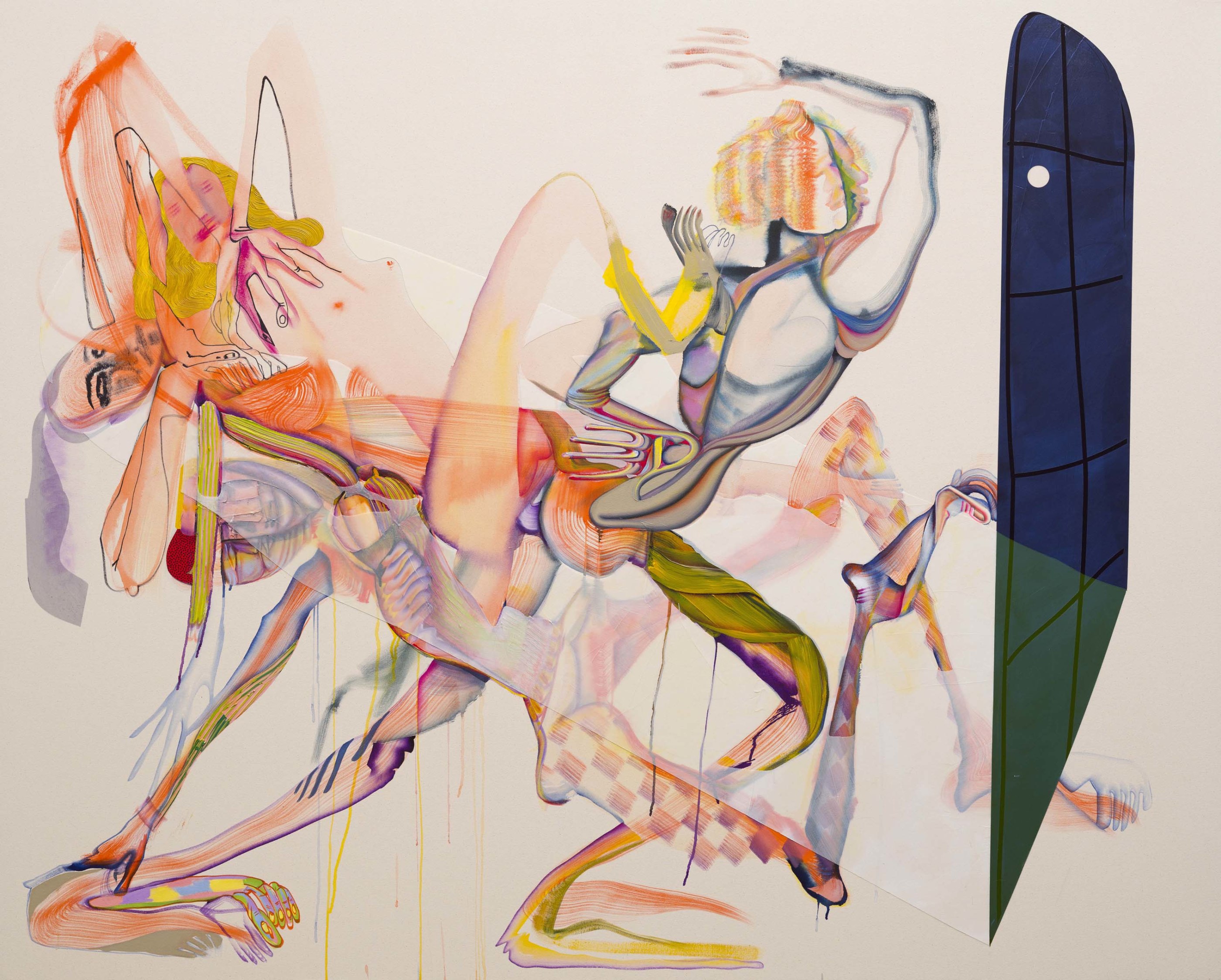Overview
Los Angeles–based artist Christina Quarles paints bodies that are subjected not only to the weight and gravity of the physical world but also to the pleasures and pressures of the social realm. Her evocative scenes feature ambiguous figures whose limbs, torsos, and faces merge with familiar domestic objects made strange through unexpected color choices and experimental painterly gestures. The largest presentation of her work to date, Christina Quarles surveys the artist’s paintings of the last three years and features the US debut of a large-scale installation that playfully references trompe l’oeil—an optical technique for producing the semblance of depth that the artist relates to the illusory boundaries that demarcate the self. The exhibition also includes a selection of Quarles’s drawings, which often include text that references vernacular language and popular culture. Ultimately, Quarles’s work explores the universal experience of existing within a body, as well as the ways race, gender, and sexuality intersect to form complex identities.
Los Angeles–based artist Christina Quarles paints bodies that are subjected not only to the weight and gravity of the physical world but also to the pleasures and pressures of the social realm. Her evocative scenes feature ambiguous figures whose limbs, torsos, and faces merge with familiar domestic objects made strange through unexpected color choices and experimental painterly gestures. The largest presentation of her work to date, Christina Quarles surveys the artist’s paintings of the last three years and features the US debut of a large-scale installation that playfully references trompe l’oeil—an optical technique for producing the semblance of depth that the artist relates to the illusory boundaries that demarcate the self. The exhibition also includes a selection of Quarles’s drawings, which often include text that references vernacular language and popular culture. Ultimately, Quarles’s work explores the universal experience of existing within a body, as well as the ways race, gender, and sexuality intersect to form complex identities.
Using Adobe Illustrator to generate aspects of her compositions, Quarles introduces digitally rendered patterns and markings that destabilize the sense of space in her paintings. The distorted and often disintegrated figures that inhabit these hybrid environments reflect the fragmented experience we have of our own bodies and underscore the gaps that exist between our self-understanding and others’ perceptions. Hovering between representation and abstraction, Quarles’s paintings portray subjects who don’t easily fit within the confines of the canvas or discernable categories, and who commingle with each other in enigmatic ways.
Tracing the arc of her young yet remarkable practice toward increasingly complicated groupings of figures, Christina Quarles demonstrates the artist’s sensitivity to the ways in which, through intimacy and in relationship, we come to know each other as messy and multifaceted selves.



